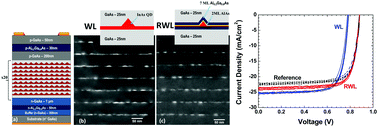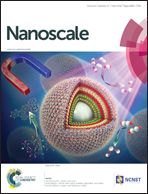Complete voltage recovery in quantum dot solar cells due to suppression of electron capture
Abstract
Extensive investigations in recent years have shown that addition of quantum dots (QDs) to a single-junction solar cell decreases the open circuit voltage, VOC, with respect to the reference cell without QDs. Despite numerous efforts, the complete voltage recovery in QD cells has been demonstrated only at low temperatures. To minimize the VOC reduction, we propose and investigate a new approach that combines nanoscale engineering of the band structure and the potential profile. Our studies of GaAs solar cells with various InAs QD media demonstrate that the main cause of the VOC reduction is the fast capture of photoelectrons from the GaAs conduction band (CB) to the localized states in QDs. As the photoelectron capture into QDs is mainly realized via the wetting layers (WLs), we substantially reduced the WLs using two monolayer AlAs capping of QDs. In the structures with reduced WLs, the direct CB-to-QD capture is further suppressed due to charging of QDs via doping of the interdot space. The QD devices with suppressed photoelectron capture show the same VOC as the GaAs reference cell together with some improvements in the short circuit current.


 Please wait while we load your content...
Please wait while we load your content...